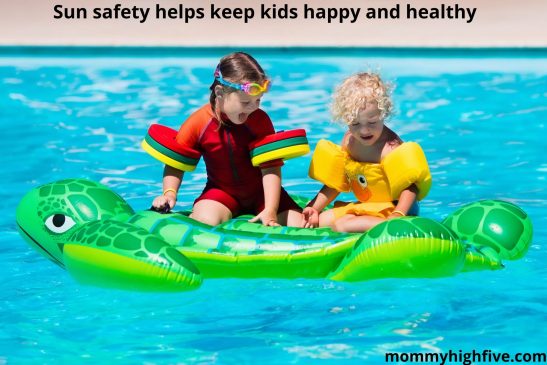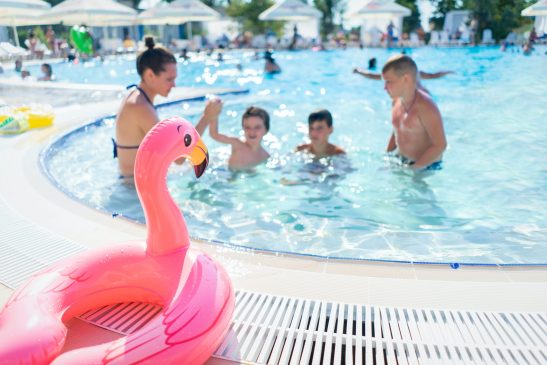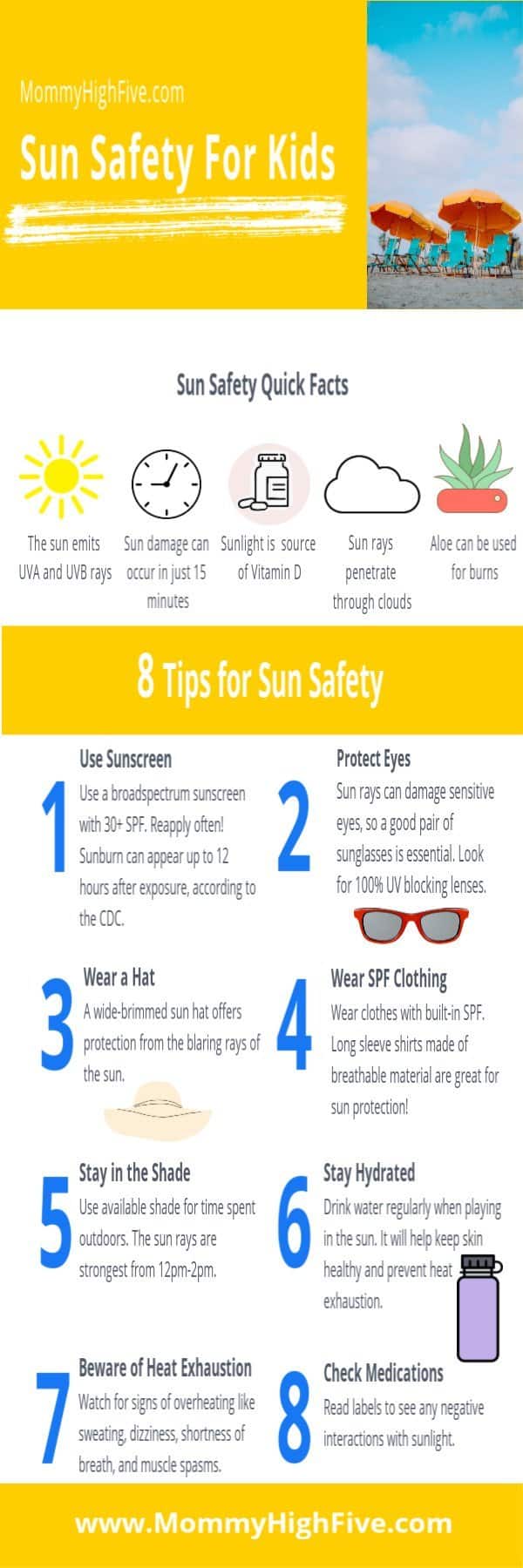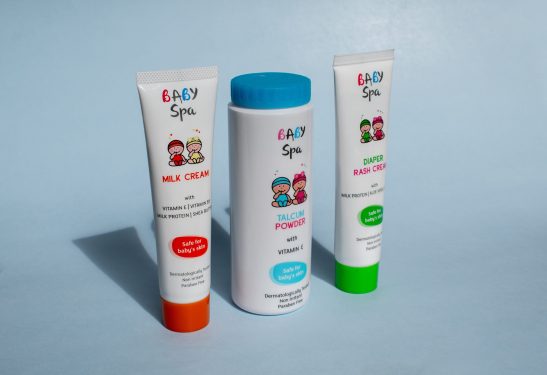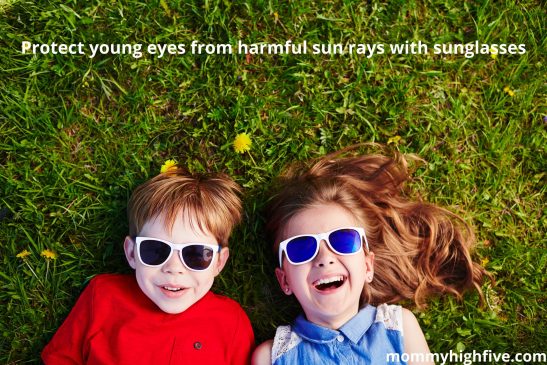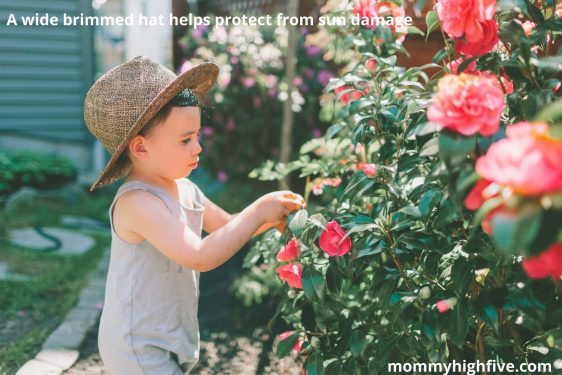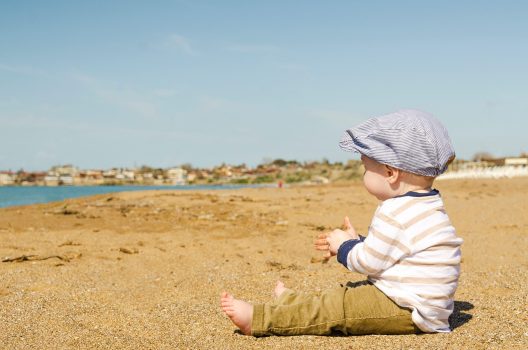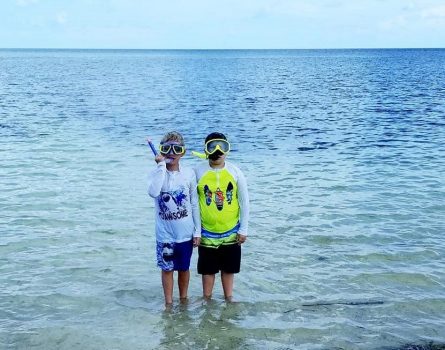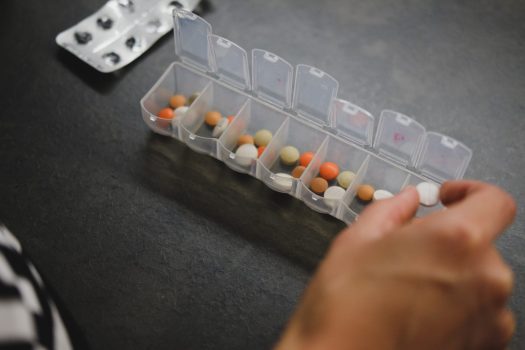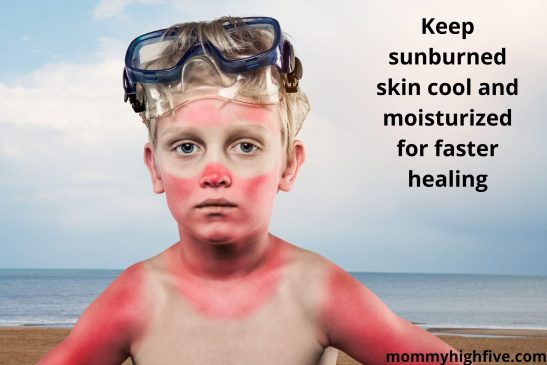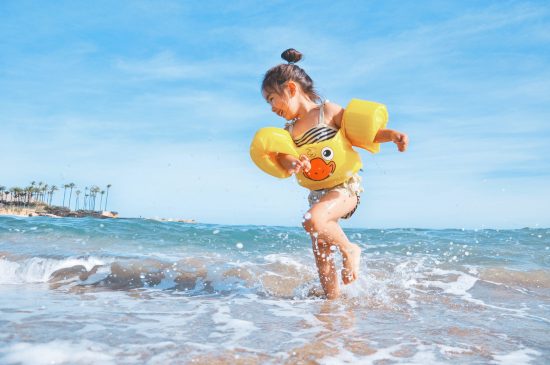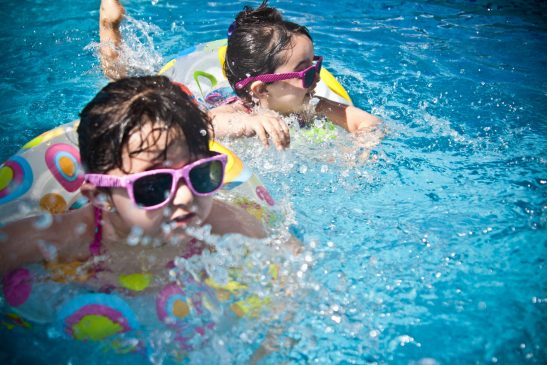One out of 3 Americans gets sunburned every year.
Over 600 people die every year due to heat stroke.
It is possible to safely enjoy being in the sun, though, if you take the proper precautions. Sun safety is an important part of keeping your kids happy and healthy.
Being outdoors has multiple benefits for people of all ages, and the more outdoor playtime your kids have, the better!
A good time outside can quickly turn bad, however, if proper sun protection isn’t used. If you have ever experienced sun burn and the peeling skin and sun damage after, then you already know some of the reasons why sun safety is important! In this article, we will go over a few tips for sun safety as your kids enjoy the great outdoors!
Since kids are known for asking question after question, they may be curious about why they need to practice sun safety. So here is a great response in case they ask something like, “What causes sunburns?”
You can tell your child something like this, “A sunburn happens when too much sun, or ultraviolet light, hits your skin. Your body tries to protect itself from UV light by producing melanin, which creates a tan. But a sunburn occurs if your skin is exposed to a lot of sun for a long time, especially if you have fair skin.”
With this basic understanding, hopefully your child is ready to protect themselves from sun damage. Keep reading to find all the best sun safety tips for kids!
The Importance of Sun Safety
Sun exposure can have benefits, so getting outside is still encouraged! Sunlight is a source of Vitamin D for people of all ages. Just a small amount of sun exposure can increase Vitamin D levels, which creates better Vitamin C absorption to make strong bones. Vitamin D can also be obtained through a diet full of fruits of vegetables, or a multivitamin.
Too much sun exposure can cause sunburn, skin damage, compromised immune system, and even skin cancer. The sun can also cause eye damage in the retina.
The thing about sun damage is that it can go undetected for years. Getting a sunburn as a 10-year-old can turn into a spot of skin cancer when you are twenty. Sun safety as kids is just as important, if not more important, than sun safety as adults.
The sun emits ultraviolet rays (UVA and UVB) that can both cause sun damage. According to the Skin Cancer Foundation, UVA rays have a longer wavelength and affect the aging of skin. UVB rays have a shorter wavelength and affect the burning of the skin.
UV rays react to the melanin in our skin, which can lead to sunburn, wrinkles, drying out of the skin, eye damage, and can eventually lead to skin cancer. People of all skin tones need to practice sun safety.
Sun Safety Tips
These sun safety tips will come in handy the next time you and your family want to venture outside!
Tip #1 – Use sunscreen
Let’s start with the most obvious tool to protect against sunburn: sunscreen! Sunscreen works by creating a barrier on your skin, making it harder for UV rays to inflict damage. Some sunscreens even reflect UV rays away from you.
You’ve seen the abbreviation “SPF” before and likely understand that it indicates the strength of a sunscreen. Basically, the higher the SPF, or sun protection factor, the more potent the sunscreen. Contrary to what I heard growing up, SPF measures the amount of sun exposure skin can tolerate not the amount of time spent in the sun. This makes sense since the sun is obviously stronger at certain parts of the day.
Maybe you’re wondering about the best type of sunscreen to purchase for your children. With so many options to choose from, I certainly understand! Looking through all the products out there can be overwhelming. You may ask: What is the best SPF for children? Is spray or lotion better?
A broad-spectrum sunscreen (broad spectrum means it protects against both UVA and UVB rays) of at least 30 SPF is recommended for kids. And while I know that the spray is considerably more convenient, especially when your kids are anxious to go play, I recommend the lotion because it tends to provide a thicker layer of protection.
Here are a few more insights to think about when deciding which sunscreen to buy. You might want to consider a sunscreen with zinc oxide for kids. It creates an extra barrier over the skin and is less likely to irritate your little one’s skin.
Also, a waterproof sunscreen is best to use for any outdoor activity near water (swimming, fishing, sprinklers, etc.). I use waterproof sunscreen on my boys, especially during sports season as it will stay put through sweat as well!
Sunscreen should be reapplied regularly. I aim for every two to three hours when we’re outside. The importance of good coverage, broad spectrum sunscreen cannot be stressed enough. According to the CDC, sun damage can occur within 15 minutes, and it can take up to 12 hours before the full effects of a sunburn are visible on skin.
Do yourself a favor and make sure to properly apply sunscreen. Before going outside, rub it in thoroughly until you can’t see it anymore. Every part of your body not covered by clothes should be protected with sunscreen. Experts suggest that most people don’t use enough sunscreen. This may seem like a lot, but most people need about one ounce of screen for maximum protection.
Make applying sunscreen part of your daily routine. If kids get used to putting on sunscreen each morning before going outside, it won’t be as hard to remember for specific occasions. Sunscreen sticks are a convenient way to have kids apply sunscreen to their forehead, cheeks, nose, ears, and chin.
The ears and neck are areas that people often forget to apply sunscreen, so start with those first! Definitely remember to use either lip balm or sunscreen on the lips.
Tip #2 Protect the eyes
While sunglasses may seem like just another fashion accessory, they provide much needed protection from the sun. Find sunglasses that block 99 to 100% of both UVA and UVB rays.
Make sure to get sunglasses with UV coating since they will most effectively filter harmful rays from the sun. Read labels carefully, as many sunglasses made for kids that depict their favorite characters do not offer the best protection from the sun.
For older children, purchase a lanyard to attach to the sunglasses so the glasses don’t get lost when the kids are being active. Sunglass lanyards with a break-away clasp at the back are best for safety precautions.
Sun damage to the eyes builds up over time, so teaching your children about protecting their eyes from the sun early is important!
If your child wears prescription glasses, find sunglasses specially designed to fit over their glasses. You may also want to consider getting transition lenses that darken when the child goes outside in the sun. Transition lenses block 100% of UVA and UVB rays and are available in shatter and impact-resistant materials.
Sun damage to the eyes builds up over time, so teaching your children about protecting their eyes from the sun early is important!
If you are taking kids swimming, be sure their goggles have UV protection as well. The reflection of the sun off water can cause additional damage.
Tip #3 Wear a Wide Brimmed Hat
If your child simply won’t wear sunglasses, a hat or visor will also work at keeping the eyes shaded from the sun. While the retina won’t be protected from UVA and UVB rays, any amount of protection is better than none!
A hat also offers shaded protection to sensitive skin on the face and neck.
Another area a hat protects is the scalp. Some of the worst sunburn I ever experienced was in the part of my hairline. It’s near impossible to apply sunscreen to the hair, so wearing a hat is a great way to protect a sensitive scalp.
If your child’s hair is long enough, consider pulling it up into a ponytail and tuck inside a hat to prevent burning of the hairline as well.
Find a wide-brimmed hat with adjustable chin strap for the best protection. Some hats are made with material that has built-in UVA protection which is even better. A baseball cap or visor will also protect the eyes and face, but the back of the neck will still be exposed.
Tip #4 Choose Clothing that Protects the Skin
If your children are going to be outside for an extended period, consider dressing them in clothes that are made to protect against the sun’s rays. The advantage of wearing clothes like this is that they don’t leave any part of the skin exposed to the sun. While sunscreen is also effective, it is difficult to cover every inch of your skin.
Just make sure that the fabric has a UV coating and is proven to protect against the sun. Clothing with built-in UV protection and even SPF protection is widely available at most retailers. Look for long sleeves and pants that are made from lightweight and breathable material.
My kids love the look and feel of shirts made for fishing and boat outings. These shirts have vents on the back that prevent overheating and come in a wide variety of colors for boys and girls. Plus, they are easy to move in and won’t hinder movement.
Water shirts are another great alternative to wear outdoors. These shirts are made of swimsuit material and usually have built-in sun protection. The best thing about swim shirts is they can get wet! Let the sprinkler, splash pad, and water fun begin!
Tip #5 Stay in the Shade
Even with the sun safety tips above, your child can still become overheated while playing outside in the sun. In fact, experts advise people to avoid being in the sun for extended periods of time. Where possible, have your kids play in the shade of a beach tent, tree, pavilion, or other shelter. If you are somewhere without shade, like the beach, bring or rent an umbrella or small tent to offer kids a break from the sun.
I keep an umbrella in my car not only for rain, but also for having a way to access shade. This comes in handy especially during sporting events or practices! Some portable lawn chairs come equipped with canopies for another layer of sun protection.
Avoid the sun during the strongest rays of the day if possible. 10:00 am-4:00 pm are when the rays are strongest, with 12:00 pm-2:00 pm being the peak hours. Try to stay in the shade as much as possible, especially during these hours.
Tip #6 Stay Hydrated
Heat exhaustion is a common problem, especially during the summer months. I live in Georgia where the humidity is thick and makes the hottest days feel like the surface of the sun! When my kids are playing outside or participating in sports, I must make sure they stay well hydrated to protect themselves from heat exhaustion.
Water is the drink of choice for hydration but if your child is exhibiting signs of heat exhaustion, they need hydration with electrolytes. Drinks like Gatorade, Powerade, and Pedialyte have added electrolytes to aid in hydration.
Keep reusable water bottles handy at all times when your children are exposed to the sun. I prefer the Hydra-type flasks that keep ice cold most of the day. While any water is helpful in staying hydrated, cold water will aid the most in keeping body temperature normal.
Tip # 7 Watch for Signs of Heat Exhaustion
Signs of heat exhaustion include:
• Excessive sweating
• Increased heart rate
• Muscle aches/spasms
• Dizziness
• Confusion
• Nausea or vomiting
• Fainting
While it may feel like extra work, it’s a good idea to have a cooler packed with ice, water and an electrolyte-enhanced beverage whenever your children are going to be outdoors playing for an extended time. You will also want to have some first aid essentials on hand, such as cooling towels, ice packs, and stretchy ace bandages.
When heat exhaustion sets in, the heart works faster and harder to pump blood. The body starts to pull all available resources to keep the heart pumping, and other areas start to shut down. This is why muscle spasms, dizziness, and nausea can occur. The first thing that needs to be done to slow the heart rate down is to bring the body temperature down.
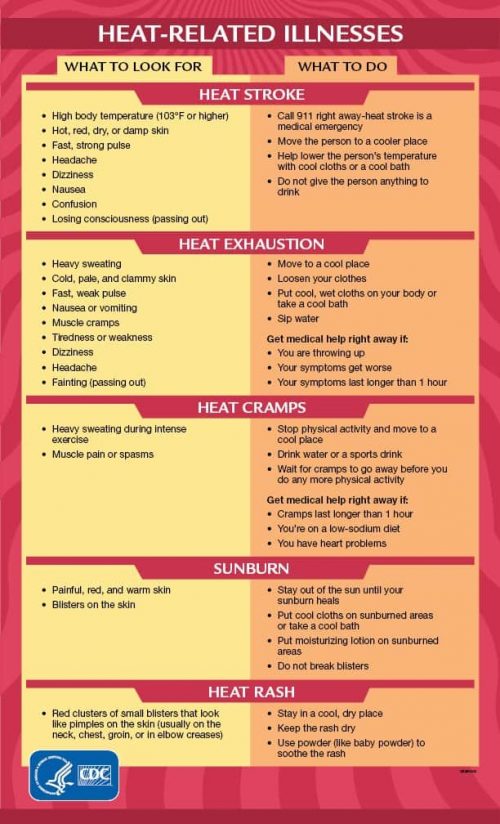
If your child is showing signs of heat exhaustion, immediately give them an electrolyte beverage and apply ice packs to their arm pits, back of the neck, groin, and behind the knees.
Use cooling towels on their forehead and neck and secure the ice packs using stretchy ace bandages. Have the child lie down (if possible) and elevate their feet so the blood can circulate easier to the heart.
If your child has lost consciousness, or shows signs of extreme heat exhaustion, call 911.
For children that play sports, if the weather is forecasting extreme heat, consider playing indoors or reducing the amount of padding or helmets during practice. Always use your best judgement when allowing your children to play outdoors during excessive heat and keep your first aid kit and packed cooler handy!
Tip #8 Check Medications
Some medications have warning labels that mention staying out of direct sunlight while on the medicine. Some medicines cause extra sensitivity to the sun, where even sunblock and staying in the shade won’t help prevent a burn. It’s best to keep children indoors that are on medications that cause extra sensitivity to sun rays.
Tip #9 Don’t forget sun protection on days that aren’t sunny
While sunscreen may be the last thing on your mind if it’s a cloudy day, you still need protection from the sun. Clouds don’t adequately block the sun’s rays from reaching your skin, meaning you can still get a sunburn. I recently read that clouds only filter a quarter of UV rays so your skin can still absorb plenty of sun.
Instead of waiting until the forecast is sunny to pack sunscreen, watch the UV index. The UV index, in case you didn’t know, provides a prediction of the risk of being overexposed to the sun each day. This will give you a better idea of when you are likely to get a sunburn.
It can range anywhere between one and eleven, but watch for a UV index of three or higher. A UV index between three and five is considered moderate since your skin will burn within 45 minutes if unprotected. You can find the UV index forecast anywhere you check the weather.
So remember that hot days aren’t the only days you need to put sunscreen on your kids. Before heading outside, check the UV index and make sure to apply sunscreen if it is over three.
This will save you from getting surprised with a sunburn and asking, “How did that happen? It wasn’t even that sunny today!” Spread the word to spread the sunscreen on cloudy days!
Tips for Treating Sunburn in Kids
Sometimes things happen and a sunburn can occur. Here are some tips for treating sunburn.
• Apply aloe vera gel to the burn. Aloe vera has proven properties that can help cool and heal a sunburn. Apply gently to the area and let dry. Reapply often.
• Take a tepid bath. Especially for all over sunburn, a tepid bath can help cool the skin down. You can also apply apply cool compressors, such as cool, wet cloths, to the skin for temporary comfort.
• Take an anti-inflammatory. Ibuprofen (for example, Children’s Motrin) can help reduce the swelling a sunburn can cause. Acetaminophen can also be used for pain and itching associated with a sunburn.
• Moisturize the skin. After a sunburn, skin can dry out and start to peel. Use a moisturizer with Vitamin E or lavender to re-moisturize the skin. Never use a petroleum jelly-based moisturizer as this can trap heat.
• Let your child rest. If your child is suffering from a sunburn, it is imperative that they stay out of the sun until they’ve had a chance to heal. They will also need to drink extra fluids in order to avoid dehydration. And make sure they understand the danger of breaking open blisters; doing so can cause infections.
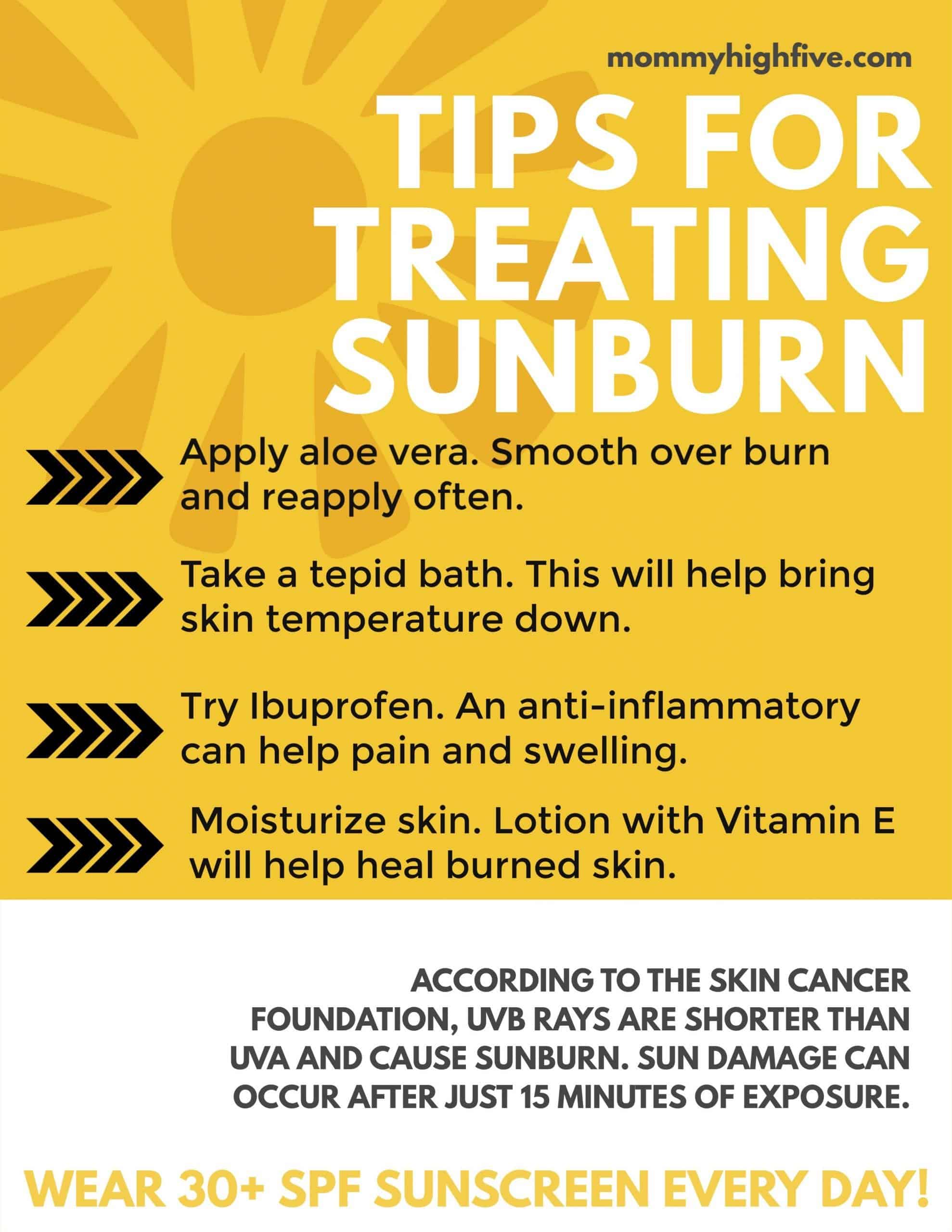
Other Things to Consider
There are some other things to consider when keeping your kids safe from the harmful effects of the sun.
• The sun rays are stronger the closer you get to the equator.
• Remember to increase sun care routines based on where you are. If you are vacationing in a climate much hotter than where you live, the sun rays are going to be stronger. This applies for elevation level as well.
• Sun damage can still occur with overcast skies. UVA and UVB rays can penetrate clouds.
• Sun damage can occur through windows as well. If you are going to be traveling long distances where the sun will be beaming in the car, remember to apply sunscreen or use a sunshade to block harmful rays.
Being outside and playing in the sun is something all kids love to do. The sun has many benefits, so don’t be afraid to let your children play outside! By following these sun safety tips, your children will be protected from harmful rays.
FAQs
How long does it take for a sunburn to happen?
Most people anticipate sunburns if they plan on being outdoors all day long, perhaps on a trip to the beach or the pool. But sunburn can occur in less than fifteen minutes of exposure to UVA or UVB rays.
You may not feel the sunburn immediately since sometimes it takes several hours for your skin to turn red. This is why it is imperative to apply sun protection even if you won’t be outside for long.
What is the best SPF for a day at the beach?
The beach is a popular place to play and lounge, but it presents increased sun exposure. The light-colored sand and water on the beach intensify UVA and UVB rays from the sun.
While sunscreen with an SPF 30 is generally recommended to block damaging rays, you may want to wear a higher SPF for a day at the beach so that you don’t come home with a harmful sunburn.
How do sunglasses protect eyes from the sun?
Sunglasses act as an excellent safeguard from the sun’s potentially harmful rays. The best sunglasses use a coating to absorb and reflect UVA and UVB rays which would otherwise damage our delicate eyes. It is crucial to select high-quality sunglasses able to provide a barrier and filter between vulnerable eyes and the sun.

